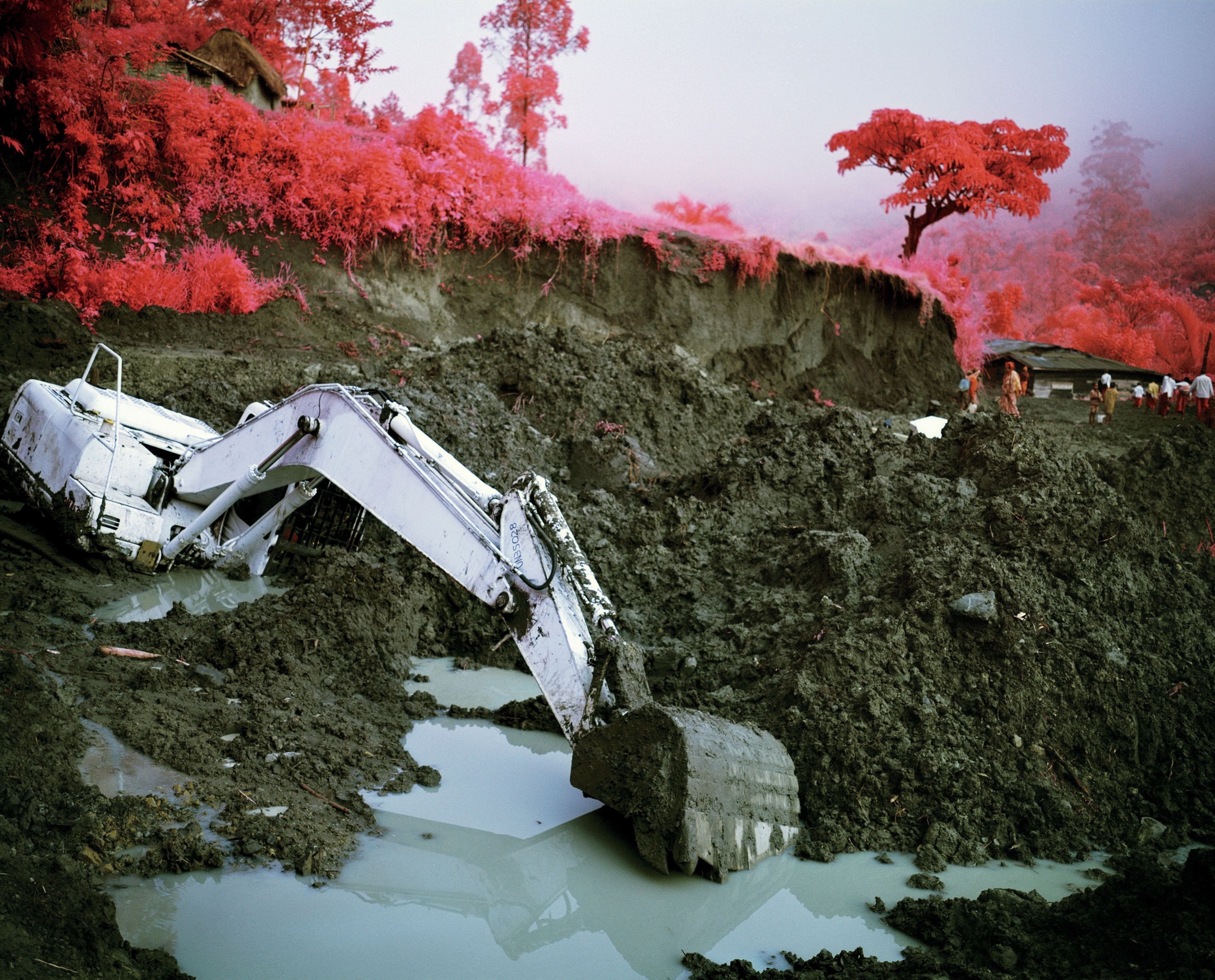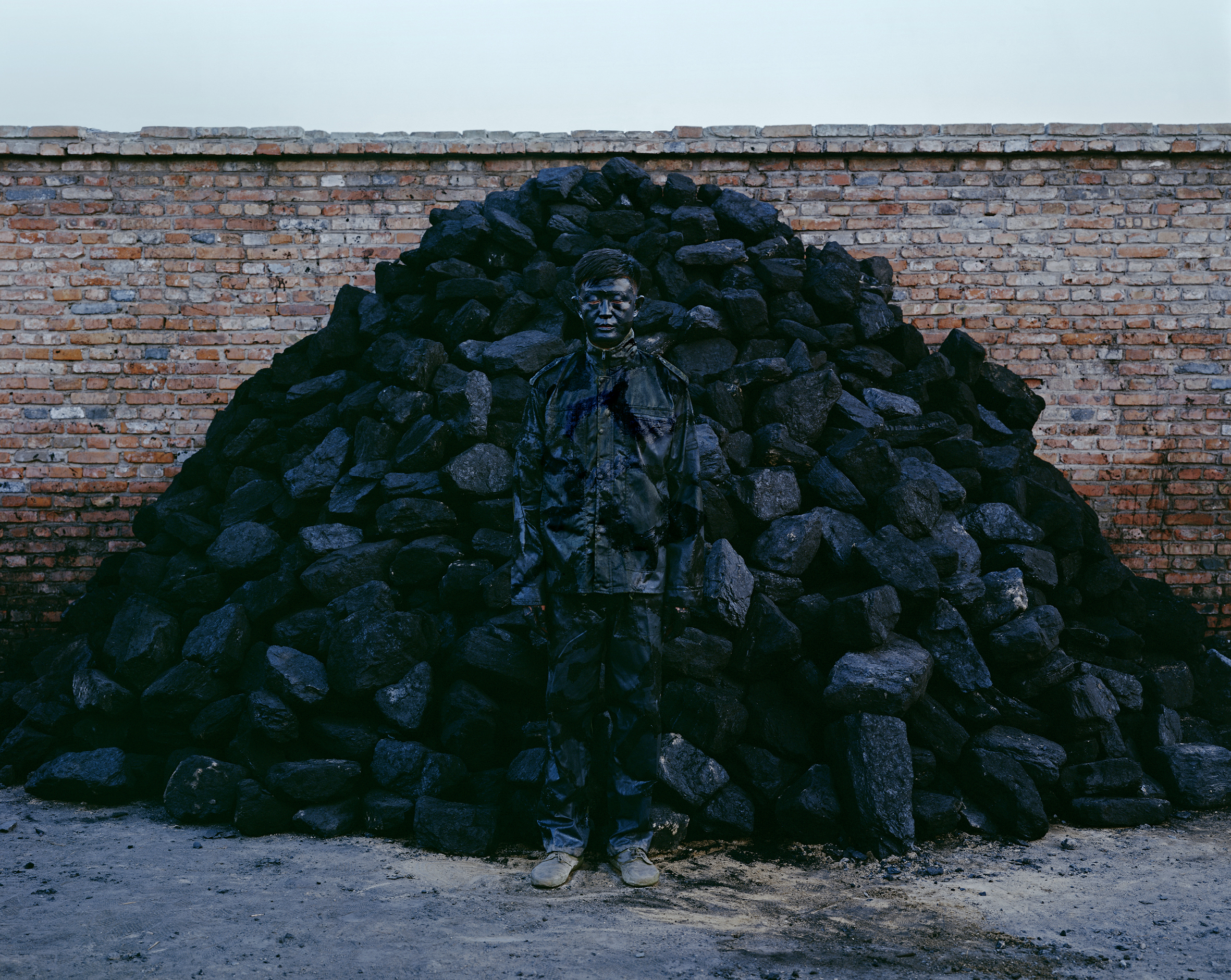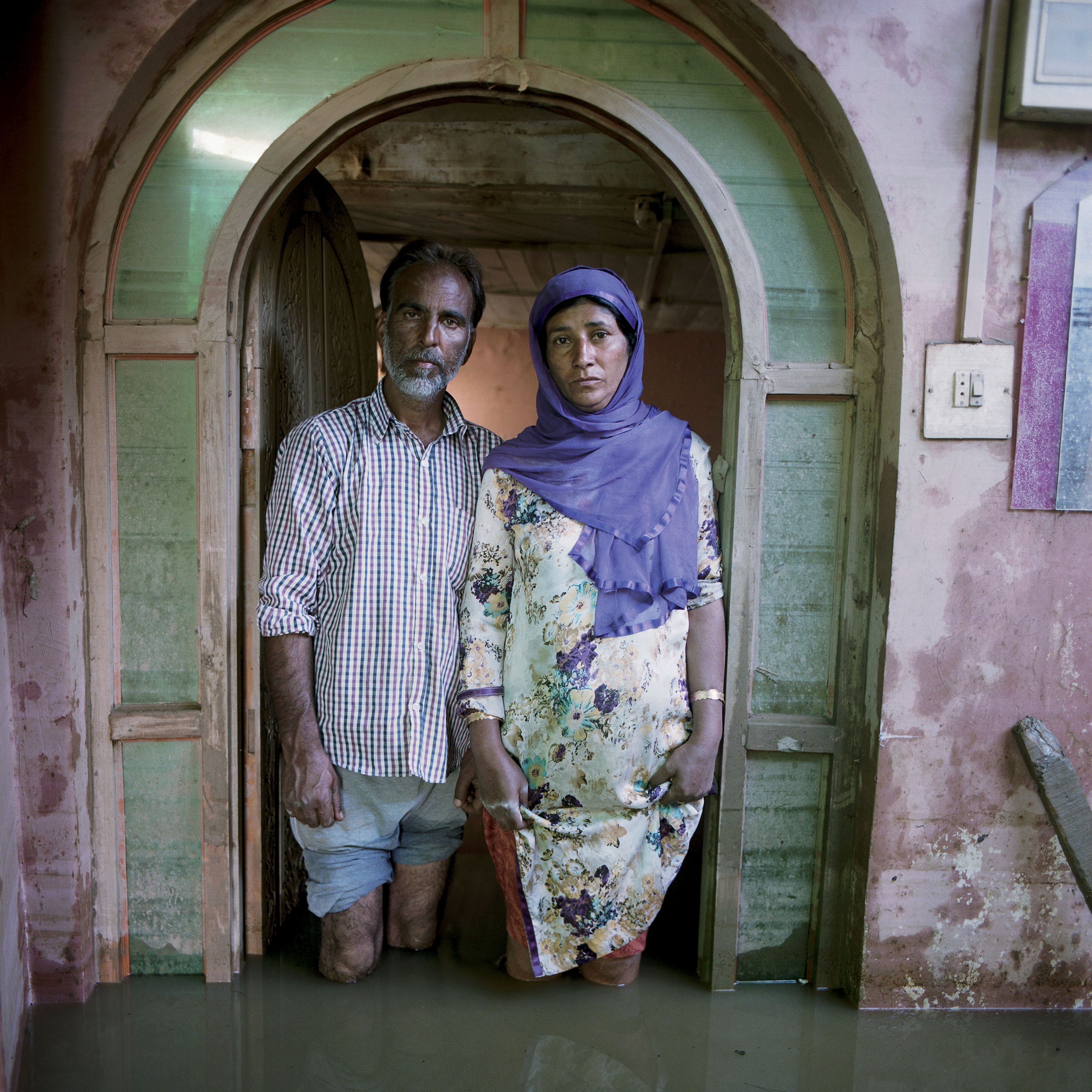 Richard Mosse’s 2011 “Stalemate”, a digital chromogenic print, is part of the spring exhibition at DePaul Art Museum. (Courtesy of the artist and Jack Shainman Gallery, New York)
Richard Mosse’s 2011 “Stalemate”, a digital chromogenic print, is part of the spring exhibition at DePaul Art Museum. (Courtesy of the artist and Jack Shainman Gallery, New York)This spring, DePaul Art Museum will present “The World to Come: Art in the Age of the Anthropocene,” an exhibition organized by the Samuel P. Harn Museum of Art at the University of Florida. The exhibition brings together work by more than 40 international artists who use photography, video and sculpture to address themes related to raw materials, disasters, consumption, loss and justice. “The World to Come” awakens viewers to the physical and social effects of the “Anthropocene,” a much-debated term used to define a new geological epoch shaped by human activity. The exhibition will open March 19 and run through Aug. 16 on DePaul University’s Lincoln Park Campus.
“There is a tremendous amount of environment-related research and work being done at DePaul University addressing environmental policy and communications, gentrification and sustainable urban development,” says Julie Rodrigues Widholm, director and chief curator of DePaul Art Museum. “By presenting ‘The World to Come,’ we hope to ignite conversations around art and science in an academic setting, to provide teaching and learning resources to DePaul faculty and students, and to underscore our mission of bridging global and local concerns.”
 Liu Bolin’s “Hiding in the City, No. 95, Coal Pile,” will be on display as part of “The World to Come.” (Image courtesy of Eli Klein and the artist. © Liu Bolin)
Liu Bolin’s “Hiding in the City, No. 95, Coal Pile,” will be on display as part of “The World to Come.” (Image courtesy of Eli Klein and the artist. © Liu Bolin)“The World to Come” is organized around seven themes: Deluge; Raw Material; Consumption; Extinction; Symbiosis and Multispecies; Justice; and Imaginary Futures. Topics range from disaster, environmental devastation and loss to the emergence of new bonds and alliances between humans and nonhumans. The exhibition tackles issues such as rapidly growing populations, waste and resource scarcity, inequality and protest, and the effects of technology.
The museum will engage the DePaul University and broader Chicago communities through a series of free interdisciplinary programs that aim to foster an awareness of these urgent social issues.
Artists whose work is on view in the exhibition respond to global and local conditions with resistance and imagination — sustaining an openness, wonder and curiosity about the world to come, explained Widholm. These artists include Sammy Baloji, Huma Bhabha, Liu Bolin, Sandra Cinto, Elena Damiani, Dornith Doherty, Mishka Henner, Laurie Hogin, Felipe Jácome, Chris Jordan, William Kentridge, Wifredo Lam, Maroesjka Lavigne, Eva Leitolf, Dana Levy, Yao Lu, Pedro Neves Marques, Noelle Mason, Mary Mattingly, Gideon Mendel, Ana Mendieta, Kimiyo Mishima, Richard Misrach, Beth Moon, Richard Mosse, Jackie Nickerson, Gabriel Orozco, Trevor Paglen, Nicole Six and Paul Petritsch, Abel Rodríguez, Allan Sekula, Taryn Simon, Laurencia Strauss, Thomas Struth, Bethany Taylor, Frank Thiel, Sergio Vega and Andrew Yang.
"When visitors come to the exhibition, what I mostly want them to do is to have a chance to pay attention, to really think and see deeply the beauty of our world and how important it is for us to keep it whole," says Kerry Oliver-Smith, curator for the exhibition and retired curator of contemporary art at the Harn Museum of Art. “Artists can change the status quo. They help us not only see the damage in the world, but they really do let us understand our strong bond with nature and how much we are the same.”
 Gideon Mendel’s “Mushaq Ahmad Wani and Shafeeqa Mushtaq, Jawahar Nagar,Srinagar, Kashmir, India, October 2014” from the series “Drowning World” 2014 is part of “The World to Come” at DePaul Art Museum. (Courtesy of the artist and Axis Gallery, New York and New Jersey)
Gideon Mendel’s “Mushaq Ahmad Wani and Shafeeqa Mushtaq, Jawahar Nagar,Srinagar, Kashmir, India, October 2014” from the series “Drowning World” 2014 is part of “The World to Come” at DePaul Art Museum. (Courtesy of the artist and Axis Gallery, New York and New Jersey)A fully illustrated catalog accompanies the exhibition and includes essays by Oliver-Smith; Marisol de la Cadena, professor of anthropology, University of California, Davis; T. J. Demos, professor of history of art and director of the Center for Creative Ecologies at the University of California, Santa Cruz; Natasha Myers, associate professor of anthropology, York University; Trevor Paglen, artist, geographer and writer; and Joanna Zylinska, professor of new media and communications, Goldsmiths, University of London.
Support for this exhibition is provided by the Andy Warhol Foundation for the Visual Arts; University of Florida Office of the Provost; National Endowment for the Arts; C. Frederick and Aase B. Thompson Foundation; Ken and Laura Berns; Daniel and Kathleen Hayman; Ken and Linda McGurn; Susan Milbrath; University of Florida Center for Humanities and the Public Sphere; University of Florida Office of Research; and Robert and Carolyn Thoburn. Additional support was provided by a group of environmentally minded supporters; the Robert C. and Nancy Magoon Contemporary Exhibition and Publication Endowment; Harn Program Endowment; and the Harn Annual Fund.
Support for the local presentation of this exhibition is provided by the David C. & Sarajean Ruttenberg Arts Foundation.